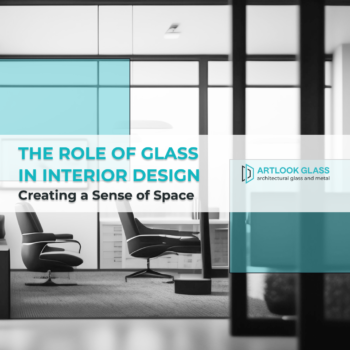In interior design, the use of glass has become increasingly popular due to its ability to create a sense of space and openness within a living or working environment. Glass offers numerous design possibilities and can be incorporated in various ways to enhance the overall aesthetic appeal of a space. Whether it’s in the form of windows, doors, partitions, or decorative elements, glass has a significant impact on the perception of space.
One of the key advantages of using glass in interior design is its ability to allow natural light to penetrate and illuminate a room. By maximizing natural light, glass helps create an illusion of expanded space and improves the overall ambiance. Sunlight can bounce off reflective surfaces, making a room appear brighter and more spacious. This effect is especially beneficial in smaller spaces where maximizing the perception of space is crucial.
Glass can also be used to visually connect different areas within a space. For instance, using glass walls or partitions can separate areas while still maintaining a sense of openness. This creates a seamless flow and allows for visual continuity, making the space feel more spacious and interconnected. By incorporating glass doors, one can create a sense of transparency and facilitate a connection between indoor and outdoor areas, further expanding the perceived space.
Additionally, glass can be used as a design feature to add depth and dimension to an interior. Frosted or textured glass, for example, can provide privacy while still allowing light to filter through. This technique is commonly used in bathrooms or office spaces where privacy is essential but maintaining an open feel is desired. The use of mirrored glass can also create an illusion of depth, making a room feel larger than it actually is.
In contemporary interior design, glass is often combined with other materials to create a harmonious balance. Glass and metal combinations, such as glass railings or glass tabletops with metal frames, add a touch of modernity and elegance. Glass and wood combinations can bring warmth and natural beauty to a space. These combinations not only enhance the aesthetic appeal but also contribute to the creation of a spacious and inviting environment.
Glass is a versatile material that allows designers to experiment with transparency, reflection, and light. Its ability to create a sense of space and openness is unparalleled. However, it is important to consider the practical aspects of using glass in interior design. Safety, maintenance, and privacy should all be taken into account when incorporating glass elements into a space.
In conclusion, glass plays a crucial role in interior design by creating a sense of space and openness. Its ability to maximize natural light, visually connect different areas, and add depth contributes to a more expansive and welcoming environment. By carefully incorporating glass elements and considering the practical aspects, designers can harness the full potential of this versatile material to create stunning and functional interiors.
Post Views: 793















